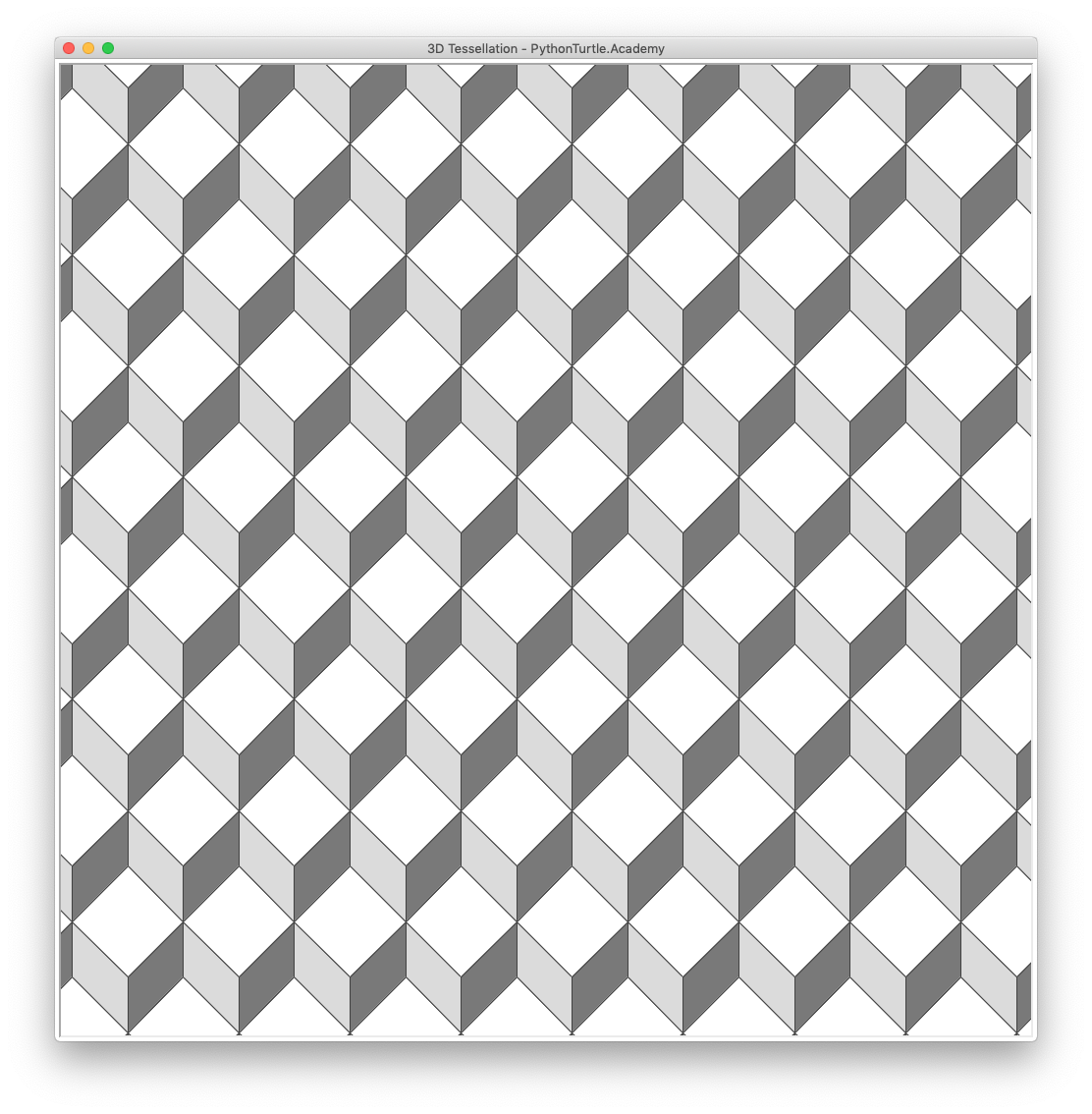

Hence, the sum of all excesses and defects is 0, as desired. Each vertice of 7 triangles, 2 Pi - 7(Pi/3) = - Pi/3. Each vertice of 8 triangles gives an excess of 2 Pi -8 (Pi/3) = -2 Pi/3. 7 hyperbolic points, 2 of 8 triangles, and 5 of 7 triangles.The excess of each vertice is 2 Pi - 5 (Pi/3)= Pi/3, hence the total defect is 9 Pi/3. 9 parabolic vertices, with 5 triangles around.

The defect of such vertices is 2 Pi - 6 (Pi/3) =0, so these do not count. In our particular tessellation of the small float, we have

Recall that the angular defect (if possitive, or excess, if negative) of a vertice is equal to 2 Pi minus the sum of the angles of the polygons around. For that we have to compute the angular defect / excess of all the vertices. We can also apply the discrete Gauss-Bonet theorem (a generalization of Descartes's theorem) to get the Euler characteristic of the torus (times 2 Pi), which is 0. By a carefully counting, our tessellation of the small float has 27 vertices, 113 edges, and 86 triangles. This can also be computed with any tessellation. And you can see the result in this video!Īs we know, the torus is an orientable surface of genus g=1, without boundary (r=0), hence its Euler characteristic is X=2-2g-r=0. This time, my students of Differential geometry of Curves and Surfaces, of 3rd year of Mathematics have got tessellations for two floats of different sizes. We have continued working on the torus, since this was not successfull in the previous session. In general, one can check if the formulas X=2-2g-r (respectively, X=2-g-r) if the surfaces are orientable (respectively, non orientable), where g is the genus of the surface and r is the number of boundary components. Here the teacher explains that the Euler characteristic of the platonic solids is 2, and other simple examples. Īnother interesting concept is the Euler characteristic (X= vertices-edges+faces) of the constructed tessellations. The concepts of Gauss and mean curvatures could be also introduced, if one has soap bubbles, like in our case. This would lead, for instance, to the classification of semiregular mosaics, or the Archimedian polyhedra. The next step could be to find all possibe combinations for each of these three types of points. The difference from 360º is called defect (or excess) of the vertice (see example below, added on May 22nd). Around a PARABOLIC point, like in any convex polyhedron, the sum has to be 360º. One can see that around a FLAT point, the sum of the angles is exactly 360º. Students can recognize immediately different types of curvatures depending on the configuration of polygons around each point. More advanced sessions for high schools or university level can be also done, as we will see below. It has been a very interesting experience, that we would like to share with other Math teachers of primary and secondary schools.

We have "covered" several surfaces with regular polygons: cylinders, cones, toruses and some hyperbolic surfaces, like the Scherk surface. There are many figures left, but here are some surfaces. All rights reserved.Scherk surface model with 3D Polyfelt, fixed on a ZOME cube.Īs announced in " Covering a float with 3DPolyfelt" we have continued working on tessellations of surfaces with our flexible pieces of felt. Supplementary data are available at Bioinformatics online. The model, data, and evaluation tests are available at. We also discuss practical applications of VoroCNN, for example, in recognition of protein binding interfaces. The prediction results are competitive to state of the art and superior to the previous 3D CNN architectures built for the same task. The resultant model, VoroCNN, predicts local qualities of 3D protein folds. Despite the irregular data domain, our data representation allows us to efficiently introduce both convolution and pooling operations and train the network in an end-to-end fashion without precomputed descriptors. Since the utility of computational models depends on their accuracy, reliable estimates of deviation between predicted and native structures are of utmost importance.įor the first time, we present a deep convolutional neural network (CNN) constructed on a Voronoi tessellation of 3D molecular structures. Despite the progress, the accuracy of predicted structures tends to vary considerably from case to case. Effective use of evolutionary information has recently led to tremendous progress in computational prediction of three-dimensional (3D) structures of proteins and their complexes. Windmill polygons, all tessellating to create the illusion of 3 dimensions with contour using warm and cool colors.


 0 kommentar(er)
0 kommentar(er)
